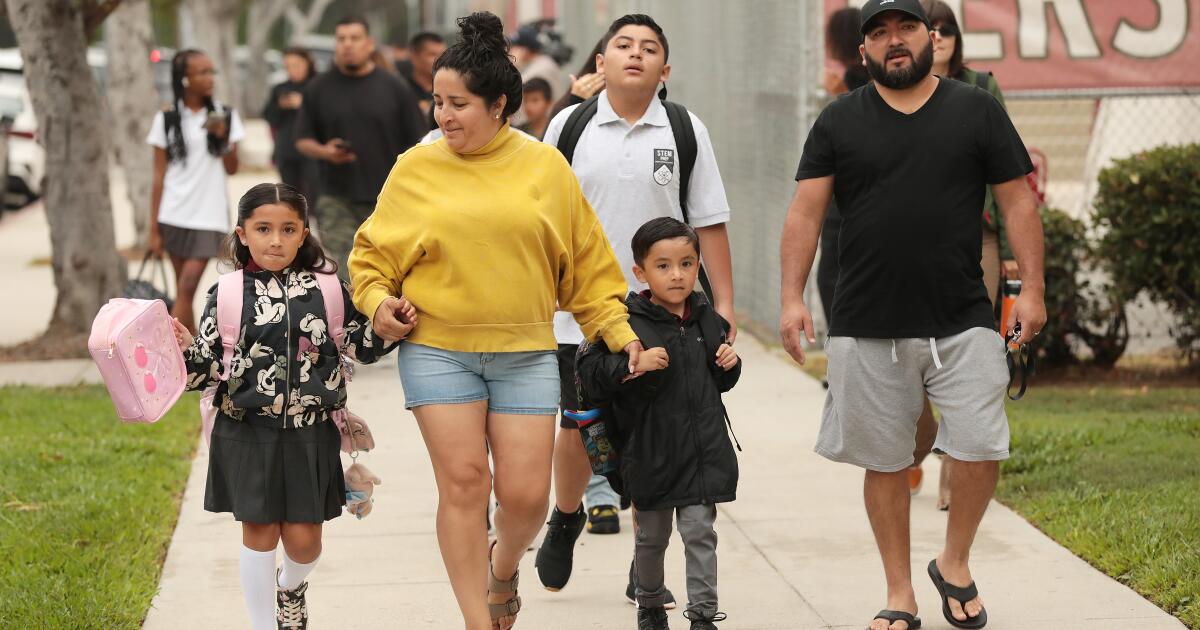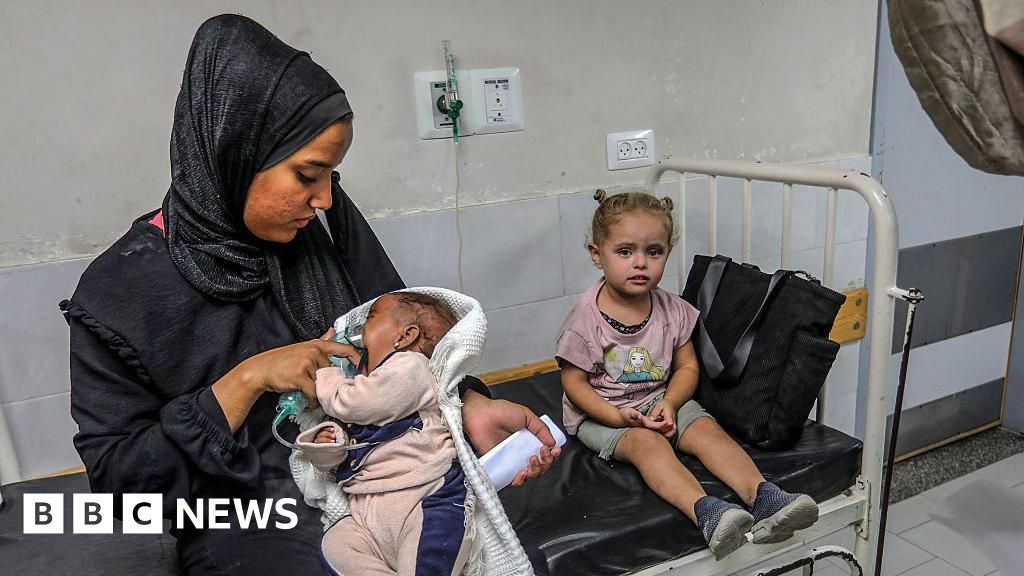
Many parents worry about “senioritis” causing their teenagers to cut class. But the students who miss the most days of school in California are kindergartners, according to a report released Monday.
While skipping out on Play-Doh and coloring might not sound serious, chronic absenteeism — defined as missing at least 10% of school days — in the early years can have long-term impacts on literacy, future educational success and social-emotional development.
Studies have found that students who are chronically absent in kindergarten are less likely to read and count proficiently by the end of third grade, and the declines are particularly acute among English-language learners.
The report by Los Angeles-based nonprofit Families in Schools in partnership with the Los Angeles Unified School District, focused on the chronic absenteeism of Latino children, who make up 73% of the students in the district. A series of parent focus groups offered insights into why rates have remained high — and suggested some potential solutions.
When parents said their child missed school for an array of reasons, most cited illness and chronic health conditions, which they didn’t generally associate with a problematic absence, according to the report.
“I wish the school or district would do a better job explaining what it means to be chronically absent. It’s not clear to me, and I think many other parents are in the same boat,” said one parent in a focus group.
Across California the number of kindergartners and transitional kindergartners who are chronically absent peaked during the pandemic at 40% in the 2021-22 school year. In L.A. Unified, the absences were higher in that same year, at 59% in transitional kindergarten, or TK as it commonly called, and 55% in kindergarten, according to district data.
Although the rate has fallen since then, the problem persists: 26% of California children in TK and kindergarten were chronically absent in the 2023-24 school year, the most recent data available, compared to 16% in 2018-19, according to state data analyzed by the nonpartisan research center PACE.
And while L.A. Unified has made increased attendance a priority since then, the problem has been hard to solve.
Nearly one in three Latino kindergartners and transitional kindergartners were still chronically absent during the 2023-24 school year, according to state data cited in the report.
Nationwide, chronic absenteeism for all grade levels was at 23.5% in 2023-24, according to the data from the American Enterprise Institute — about twice as high as it was before the pandemic.
Several researchers have suggested that cultural shifts among students about the importance of in-person learning may be one factor, but mental health struggles, not getting enough sleep, illness and a sense among some that school is boring also factor into the high rates.
“The nation has normalized low levels of attendance in secondary education,” LAUSD Supt. Alberto Carvalho said in an interview. “But this report details how we have an equally significant problem on the other end of the spectrum.”
Yolie Flores, Families in Schools CEO and president, said she expected the focus groups would reveal that parents didn’t understand the importance of schooling in the early years to their children’s academic success. But while she said a few parents mentioned that missing kindergarten did not seem like a serious problem, most shared a strong commitment to their child’s education. Instead, the problems revealed were generally more systemic, Flores said.
“The most talked about issue,” she said, was how difficult it could be for children to transition from home or preschool to the LAUSD classroom, adjust to a new schedule and feel comfortable with a new teacher and environment.
“Some kids aren’t emotionally prepared for the transition to kindergarten, which affects their attendance and tardiness,” said one parent.
Others said their child had struggled to develop a close relationship with a teacher. “I remember a parent saying that their child had a teacher that would scream at them, and then they wouldn’t go to school,” said Flores.
Despite the district’s best efforts, some of the messages regarding the importance of attendance and when to keep kids home with an illness (a runny nose is not enough) have not consistently reached the parents of the district’s youngest students, Flores said. The district needs more tools of communication, including simple videos for low-literacy families, and more frequent reminders beyond the first few weeks of school, Flores said.
The report lists a wide range of recommendations, including offering parent workshops to help increase awareness of the harms of chronic absenteeism, grace periods for arrival times while children adjust to a new schedule and clarifying school policies on when to send a child to school if they’re showing signs of a possible illness.
As part of the report, LAUSD officials proposed ways to build on existing attendance efforts, such as starting attendance interventions for 4-year-olds in transitional kindergarten, training staff on non-punitive problem-solving approaches and offering orientations for kindergartners.
Carvalho said that attendance so far this year has been strong — despite fear among Latino families amid the ongoing immigration raids.
The district has ramped up its attendance outreach efforts significantly this year, he said. Schools have also been making lists of families who are most at risk of chronic absence, based on factors such as poverty level and English status. Carvalho said district employees have already knocked on thousands of doors this year and made more than 18,000 calls to remind families to get their kids to class.
But even with the district’s best efforts, issues like illness can be hard to navigate for families. Colds and other viruses are a common problem, as any parent of young children can attest. Dulce Valencia, the mother of a kindergartner at San Fernando Elementary School, said her son has been out sick twice in just the first few weeks of school.
“I know it’s their goal to always have their kids in school. But if my child is at risk of getting worse or getting other kids sick, I’m not going to be sending them,” she said. She values the importance of kindergarten learning, she said, but even without a fever, if her child is drowsy or coughing, he “won’t be paying attention anyway.”



